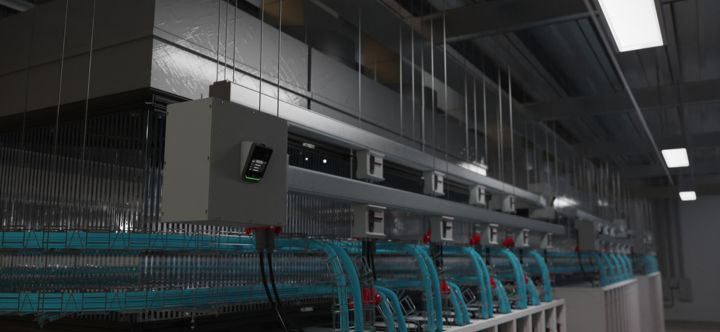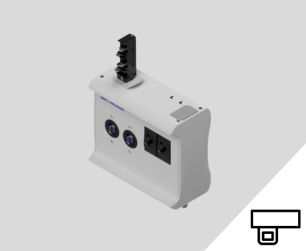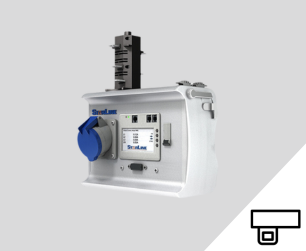
Busway vs. Traditional Cabling in Data Centers
As AI and high-performance computing push power demands in data centers, choosing between busway systems and traditional cabling is crucial. Here’s a quick comparison of installation, efficiency, reliability, and cost-effectiveness to guide your decision.
Reliability and Safety
Reliability is essential in data center environments, where even brief interruptions can have significant impacts. Busway systems incorporate advanced safety features like oversized neutral conductors, which reduce harmonic distortion and stabilize power delivery, protecting sensitive equipment. Dual-feed configurations can provide redundant power paths, ensuring uninterrupted operation even if one power path fails.
----
Traditional cabling lacks this level of built-in reliability and safety. Without these features, traditional systems are more prone to overheating, tripping hazards, and interruptions in service, especially as data centers scale up to meet higher power demands.
Scalability and Future-Proofing
Busway systems are inherently scalable, designed to grow with your data center as power demands increase. Additional sections can be easily added without needing a complete system overhaul, making busways a future-proof solution for evolving technologies like AI. The higher power densities required by AI and high-performance computing workloads can be accommodated seamlessly with busway systems.
----
Traditional cabling, however, requires more extensive planning and modification to support expansion. Each layout change or capacity increase typically necessitates reconfiguring or rewiring, leading to increased labor and installation costs over time.
Installation and Flexibility
Busway systems are designed for adaptability. Unlike traditional cabling, which often requires complex installation under floors or through walls, busways can be installed overhead. This setup significantly reduces installation time and allows for easy adjustments as data center layouts change. When new equipment is added, busways offer a seamless way to modify power distribution without the downtime or high labor costs associated with reconfiguring traditional cabling.
----
Traditional cabling, by contrast, tends to be more rigid. Reconfiguring it can involve substantial time and resources, especially in environments where cabling must be carefully laid out under raised floors. As data centers grow to support AI-driven workloads, this lack of flexibility in traditional cabling becomes a limitation.
Cooling and Energy Efficiency
With the rising power demands of AI workloads, efficient cooling is more important than ever. The overhead design of busway systems optimizes airflow, which reduces cooling costs and helps maintain a stable temperature throughout the data center. Unlike traditional underfloor cabling, which can obstruct airflow and complicate cooling, busways promote natural circulation and lower cooling requirements.
----
In contrast, traditional cabling setups can lead to higher cooling costs due to limited airflow. As cooling demands increase with higher densities, this inefficiency can strain a data center’s budget and environmental footprint.
Moreover, According to international standards like IEC 60364, using multiple parallel cables can lead to challenges such as abnormal temperature rises and uneven current distribution. By contrast, busways provide a more efficient and reliable solution, ensuring uniform current flow and reducing the risk of overheating.
Cost-Effectiveness Over Time
While busways may involve a higher initial investment, their long-term cost-effectiveness makes them a smart choice for modern data centers. By reducing installation time, reconfiguration expenses, and cooling costs, busways offer a higher return on investment (ROI) compared to traditional cabling. Fewer reconfigurations, lower cooling costs, and minimized operational disruptions contribute to these long-term savings.
----
In contrast, traditional cabling, while initially less expensive, incurs higher costs over time due to frequent reconfiguration and additional cooling requirements. As data centers scale and evolve, these expenses add up, making traditional cabling a less economical choice in the long run.
And the winner is.....
Busway systems offer a modern, flexible solution for data centers looking to support high-density, AI-driven workloads. With superior installation flexibility, enhanced cooling efficiency, reliable power delivery, scalability, and cost-effectiveness, busways present a compelling choice for future-ready data centers. As technology advances, busway systems ensure that your infrastructure can adapt and grow without costly overhauls.
Ready to power up your data center? Contact us today to learn how busway solutions can enhance your power distribution, streamline operations, and prepare your facility for the demands of the future.
Contact Us Today and Discuss your Ideal Solution
























 Canada
Canada
 Latin America (English)
Latin America (English)
 Latin America (Espanol)
Latin America (Espanol)
 USA
USA
 China
China
 India
India
 Japan
Japan
 Republic of Korea
Republic of Korea
 South East Asia (English)
South East Asia (English)
 Austria
Austria
 Belgium
Belgium
 France
France
 Germany
Germany
 Italy
Italy
 Netherlands
Netherlands
 Spain
Spain
 Switzerland
Switzerland
 Turkey
Turkey
 UK
UK
 Africa (english)
Africa (english)
 Africa (français)
Africa (français)
 Middle East (english)
Middle East (english)
 Australia
Australia
 New Zealand
New Zealand


